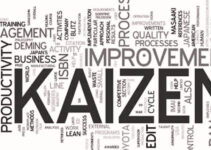Kubler-Ross proposed the change curve mode, which focuses on comprehending the phases of organizational change and personal transition. The change curve allows you to predict and anticipate the reaction of employees in the workplace; when there is an increment of responsibilities or when they change their teams. However, comprehending the change curve guides and supports your team during the transition phase to make the changes as smooth as possible. Today, we’ll discuss the change curve in the workplace; the change curve model of Kubler-Ross; the stages involved in the model; elements, advantages, and disadvantages.
Kubler-Ross change curve model follows the principle of five stages of grief; denial, anger, bargaining, depression, and acceptance. She originally presented the concept in her book “On Death and Dying” in 1969. She carefully analyzed and adapted the stages in her change curve model, and it helps companies to comprehend the reaction of people during the transition phases.
Stages Involved in the Kubler-Ross Change Curve Model
Before jumping into the discussion of the change curve in the workplace; let’s discuss the main stages involved in the Kubler-Ross change cure; they’re as follows;
Shock
When you first execute the changes, then it would shock and surprise people and they consider it a challenge to the status quo. It is a short-term and temporary phase, the fear of the unknown would decrease their growth and productivity due to limited information.
Denial
Employees and team members would reject and deny the introduction of changes after the shocking and surprising reaction. Some of them are under the perception that the changes would impact them, and they would keep working and performing like before.
Frustration
Team member starts blaming, fearing, and frustrated at the changes after the shocking and denial phase. It would decrease their performance and productivity; companies should comprehend that anger and fear are a natural reaction to the changes.
Depression
The lowest stage of their motivation level is when they realize the fact that the changes are inevitable after their anger fades away. Their motivation level is low; depression, anxiety, and self-doubts are at the highest level.
Experiment
Some team members accept the changed situation and they start experimenting and playing with the changes. Some employees would accept the changes positively and others would adapt to the changes just because they have to.
Decision
The growth and productivity of employees and team members start increasing after adapting to the changed workplace environment. They have not only accepted the changes, but they have also embraced the transition phase; they have started reaping the rewards
Integration
The changed situation has become the new normal and new status quo of employees and team members. They can employ these phases as a learning experience to comprehend the responses of team members so that they use them in the next transition phase.
Elements of Change Curve in the Workplace
Some of the main elements of the change curve in the workplace or Kubler-Ross change curve model stages are as follows;
Clarifying Change Initiative
Employees and team members would feel confused and surprised after implementing the changes. Managers and the company’s leadership should explain the change program and the reason for the changes. For instance, they conduct meetings with all the employees and team members, answer their queries, and provide the benefits of the change programs and how it could impact them positively; so that they could relate to the changes. While doing so, you should avoid overwhelming them with the change project by including so many details.
Predicting Negative Reaction
Employees’ resistance and negative reactions are bound to happen in the form of resentment and anger towards change. If you are ready for resistance, then you are in a better position to deal with their reactions rather than negatively responding to the situation. However, a wide range of emotions and responses are common among employees, and you should guide them on how the changes would help them to boost their morale.
Conducting Training Session
Conducting training programs would help employees and team members to feel comfortable and ready for the changes. Change is inevitable in the business environment; you can simplify the change process by informing employees how the training program would explain the new processes, roles, and responsibilities. However, different types of training programs for different employees and team members would attract their attention impacted by the change program.
Supporting & Facilitating
Different team members would react differently to the change program, you should ask them how they feel about the change program. They need further clarification and explanation, and reassure them that the changes aren’t happening due to their performance; they need someone to listen to their anger and frustration. You should support and facilitate the change program by developing change strategies; it helps them to make the transition as smooth as possible.
Analyzing the Outcome
Once the team has implemented the changes, it is significant to analyze the result of the change program. It is possible that they are experiencing the change for the first time in their career; you should ensure them that the changes will bring positive changes and you are committed to making positive improvements in their role. You should conduct surveys and meetings to gather their feedback to make improvements in the change plan and manage their emotions.
Advantages of Change Curve in the Workplace
Some of the main benefits and advantages of the change curve in the workplace or the Kubler-Ross change curve model are as follows;
Objective Approach
The focus of the change curve model is on the emotional reaction and response of employees towards the changes. It helps managers and leaders to make sure that the team would positively respond to the changes.
Convenient
The curve model offers clear and simple implementation steps and phases. It is much simpler and easier to execute than other models and strategies like Kotter and ADKAR.
Subject Focused
The curve model focuses on studying and observing the subject matter clearly and deeply. It has a flexible structure and it could fit into various types of businesses and industries.
Disadvantages of Change Curve in the Workplace
Some of the main challenges and disadvantages of the change curve in the workplace are as follows;
No Link between Stages
The curve model doesn’t have a clear link among all the stages and phases of the model. The experiences and emotional reactions of all the people are different, and they all go through these stages and phases differently.
Observation Model
The five stages of grief follow the situation of terminally ill patients. There is another scientific model based on empirical observation, and it considers the curve model irrelevant. In fact, the curve model wasn’t for corporate change management programs.
Multiple Responses
Different people would adapt to the changes at different paces in the curve model stages. Some of them would take more time in one stage, and the others perform the stage immediately. However, it results in the form of time and planning issues.
Conclusion: Change Curve in the Workplace |Kubler-Ross Change Curve Model
After an in-depth study of the change curve in the workplace; we have realized that the change curve model helps companies comprehend the employees’ emotional state. If you are learning about the Kubler-Ross change curve model in the workplace; then you should keep in mind the abovementioned stages of the change curve model in the workspace; elements, advantages, and disadvantages.
Ahsan is an accomplished researcher and has a deep insight in worldly life affairs. He goes Live 3 days a week on various social media platforms. Other than research writing, he’s a very interesting person.


